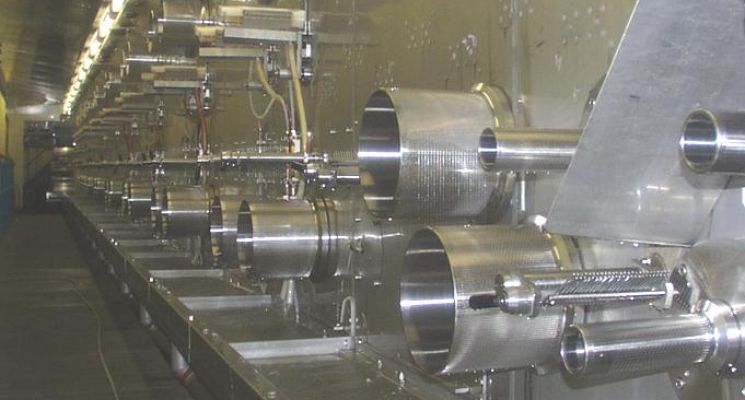TEXTILE AND TECHNICAL CELLULOSE FILAMENT YARNS
When the key parameters for all subsystems of the R&D pilot system have been determined, one more interim step remains to be done before the actual production system can be constructed. This kind of system is normally considerably larger than the R&D system and provides information about the operation and handling of the system from the operator’s point of view.
The capacity of a pilot system is usually chosen so that initial sales quantities can be produced and all quality features can be met. feasibility studies can be performed based on the size of that system and the market benefits and risks can be delivered based on the product to be manufactured.
The investment costs, manpower requirements, raw material and energy consumption of the production plant can be fairly estimated based on the data from the pilot system.
Based on the picture provided by this information, the spinning media can be applied directly to the thread in order to keep the amount of circulating liquid as low as possible. Alternatively, threads can also be extruded into filled vats or troughs . The designs will include doping production, filtration, degassing, spinning nozzles, the precipitation bath, extraction, drying, the traverse system, the post-treatment system and the spooling system. Data can also be provided about the recovery of the used solvents.
The spinning heads are particularly important for the production of the fibre. From rheology data to the design of nozzles and the precipitation bath, all individual elements will be adapted to the process requirements and respective construction methods will be used. In this, we can rely on more than 90 years of experience in the most diverse systems for solvents and polymers. We have already built systems and spinning components for polymers, such as: PAN, CE, PS, PES, PI, PP, AR, CA, CV, PLA and similar substances.

Wet spinning line with special washing system
